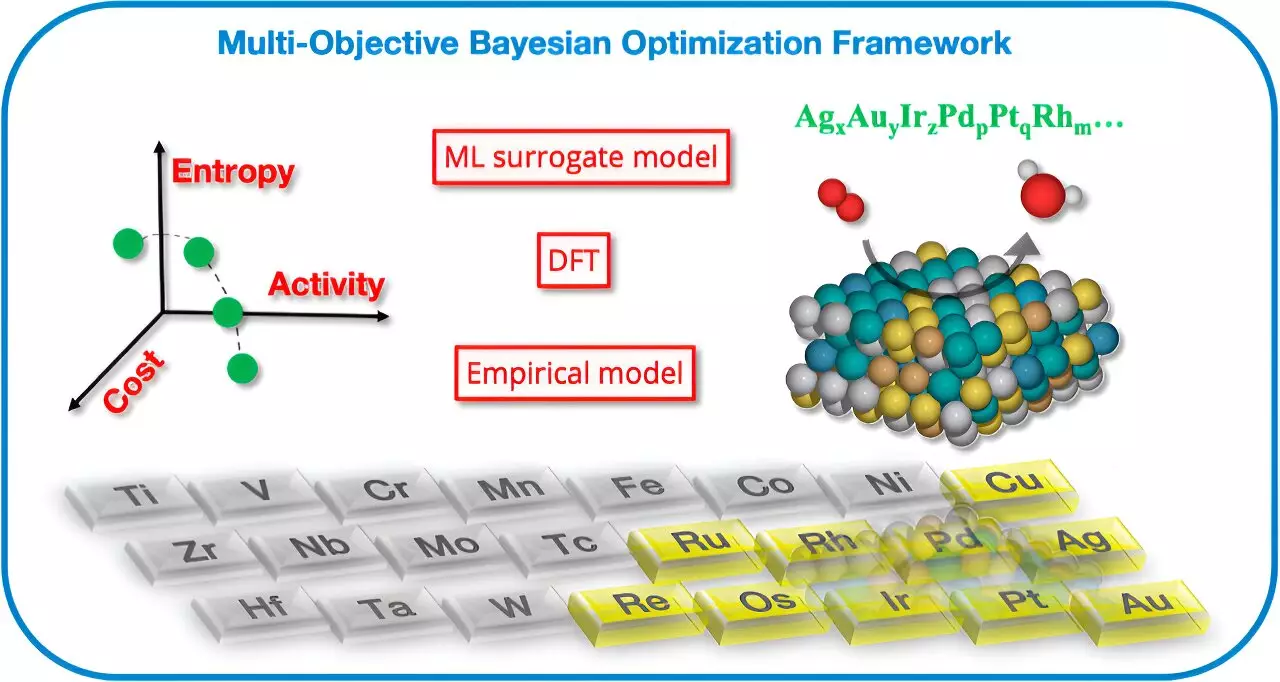In a groundbreaking development, Prof Dr. Johannes Margraf and his team of scientists have revolutionized the field of electrocatalysts by utilizing simulations and artificial intelligence. Their innovative approach has led to the creation of a computer program capable of optimizing multiple properties of catalysts simultaneously. This cutting-edge research has recently been published in the prestigious Journal of the American Chemical Society.
High entropy alloys (HEAs) have emerged as a promising class of materials for electrocatalysis, a process essential for accelerating chemical reactions in batteries and fuel cells. Unlike traditional metal catalysts, HEAs are composed of a diverse mix of elements, resulting in a highly intricate structure with superior catalytic properties. However, determining the optimal combination of elements for specific applications has been a significant challenge for researchers.
While previous studies have predominantly focused on enhancing catalytic activity, Dr. Margraf’s team has pioneered a novel algorithm capable of enhancing multiple catalyst properties concurrently. By leveraging simulations and artificial intelligence, the researchers have successfully improved key attributes such as activity, cost, and stability. This innovative approach has enabled the prediction of numerous new HEAs with varying trade-offs across these critical properties.
One of the most exciting outcomes of this research is the discovery of cost-effective alternatives to platinum catalysts commonly used in fuel cells, particularly in oxygen reduction reactions. The algorithm identified catalysts that exhibit comparable activity to platinum but at a significantly reduced cost, offering a cost-effective solution for fuel cell technology. Furthermore, the researchers identified catalysts with remarkable activity levels exceeding that of platinum, further highlighting the potential of HEAs in revolutionizing electrocatalysis.
Although the theoretical predictions made by the researchers present a promising outlook for the future of electrocatalysts, practical experimentation is essential to validate these findings. The next phase of this research will involve conducting rigorous experiments to confirm the efficacy of the newly identified HEAs in real-world applications. By bridging the gap between theory and practice, Dr. Margraf and his team aim to pave the way for a new era of efficient and cost-effective electrocatalysts.


Leave a Reply